Guzheng: Chinese Stringed Instrument with Long-Lasting Popularity
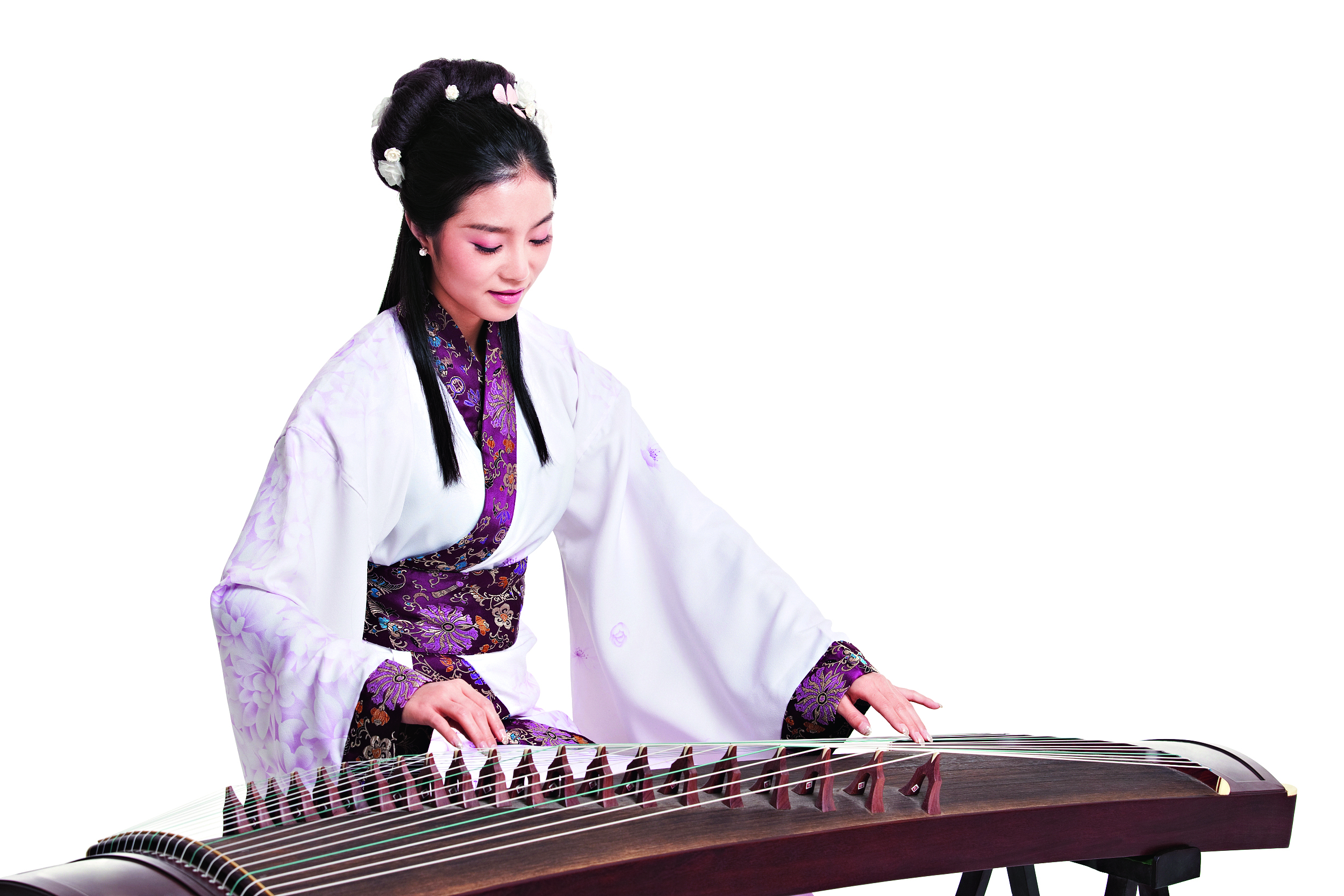
Guzheng is a popular traditional, plucked Chinese musical instrument. As the art of playing Guzheng has been handed down by Chinese instrumentalists from generation to generation, for more than a millennium, countless people, from around the world, have become fascinated by the instrument's "celestial beauty." In 2008, the art of playing Guzheng was added to the list of the country's items of intangible cultural heritage.
"Sweetie, you are next. Relax and just focus on your playing," said Cao Yuanyuan, a young guzheng teacher at Beijing 101 Middle School, while adjusting the collar of Xi Rong, a girl who was dressed in an elaborate hanfu, the traditional Chinese costumes during the Han Dynasty (206 BC-220 AD). With an audience of around 200 seated people in the school theater and 100 more watching live streaming online, 14-year-old Xi paced up and down behind the stage, looking a bit tense, but there were also sparkles of excitement in her eyes. Two minutes later during the school concert, the spotlight shined on her as she played her guzheng solo debut in the Dream Theater of Beijing 101 Middle School.
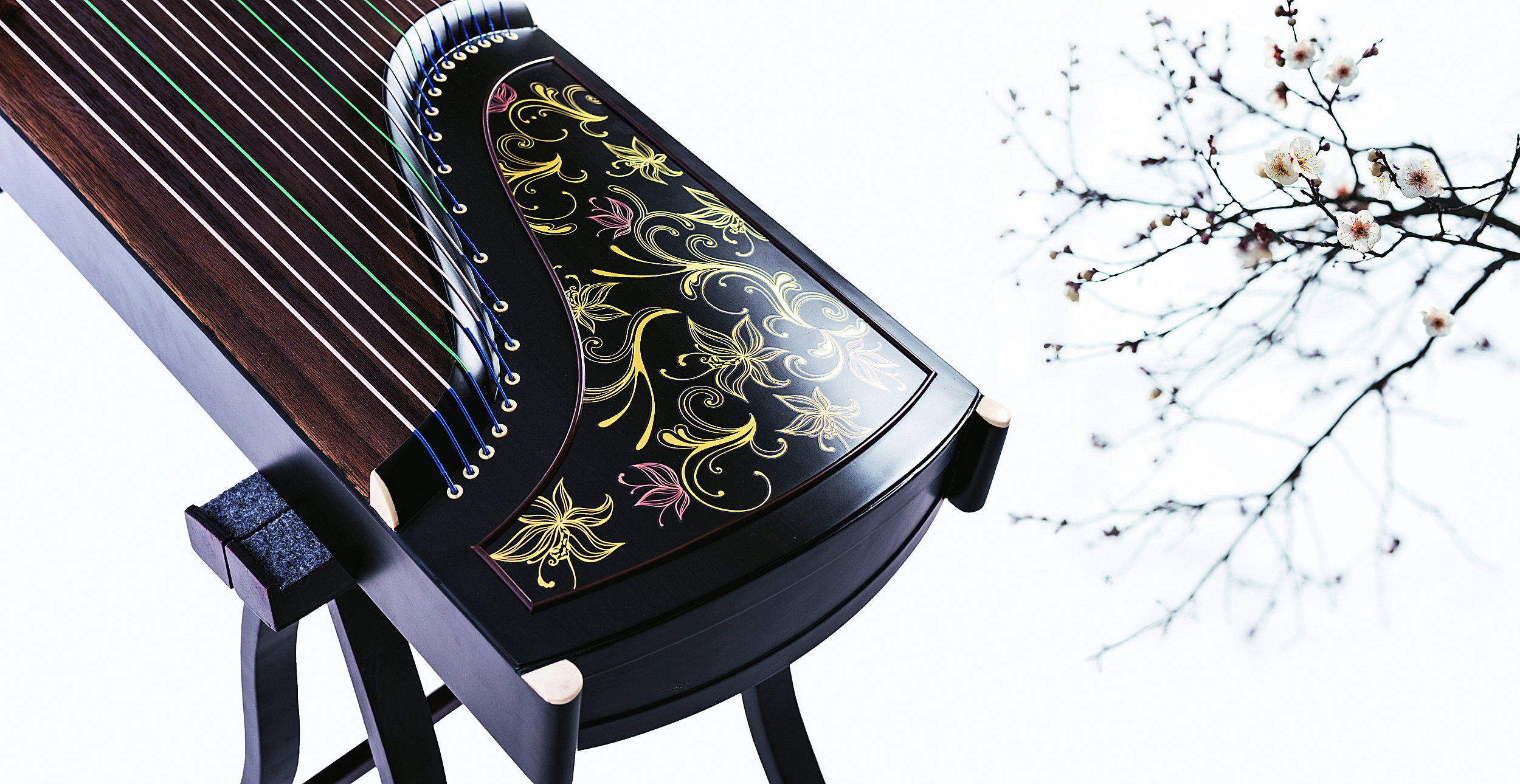
Long-lasting Popularity
Played by millions of people in China, guzheng is a popular traditional Chinese musical instrument. There are a number of guzheng clubs and studios hosted by schools throughout China.
According to historical records, guzheng first became popular during the Spring and Autumn Period (770-476 BC). Being widely played in the court and by the public, it had already become the most popular stringed instrument by the prime time of the Tang Dynasty (618-907).
During the Yuan Dynasty (1206-1368), the guzheng duet performance emerged. By playing in concert together, two players make their rendition more expressive and touching through their musical interactions.
In the 1950s, the design and manufacturing techniques of guzheng went through a major transformation, highlighted by an enlarged soundbox and the addition of metal strings which enabled the stings to produce a louder sound. By the 1960s, the model of guzheng we use today was set: 160.5 centimeters long and 33.5 centimeters wide with 22 strings.
Making Techniques, Old and New
There are several types of guzheng. The typical one has 21 strings which mainly consists of a front board, backboard, side board, head, tail, bridges and strings. The resonance soundbox is composed of the front board, backboard, and side board. An arched sound bridge is placed inside the soundbox, not only to produce sound but also to support the box. The quality and structure of the soundbox decides the sound of guzheng. The head is used to fix the strings, and its sides have holes to allow the sound to emit. Besides, the head is usually connected to the resonance box, therefore expanding the range of sound. The head and the tail look symmetrical. The bridges under the strings can be moved sideways to change the pitch and tune.
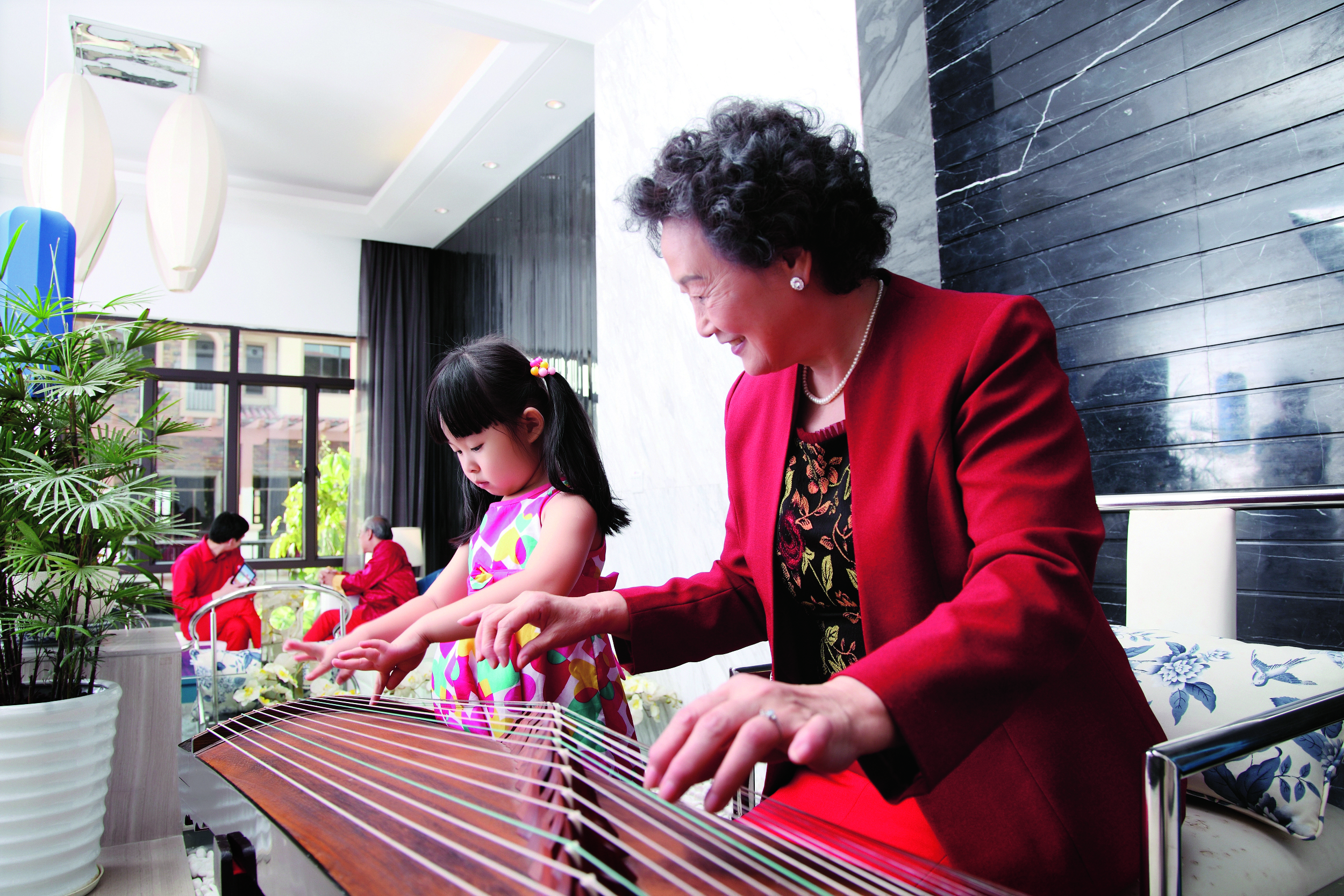
Guzheng-making techniques can be categorized into two types: Traditional hollowing and modern method. There are two ways of hollowing. One is front board hollowing: The front board is made using one piece of wood. The other is whole board hollowing: Both the front board and the sideboard are made from one piece of wood. The material for whole board hollowing needs to be dried for at least five years for better sound quality and longer life.
The guzheng that is made with the modern method is called a curved zheng, featuring a curved front board which is pressed from a flat board. The board is dried by heat and then pressed into an arc by special machines. A good guzheng is able to create a wide range of tones and play various music styles.
An Ongoing Passion
Guzheng has always been widely popular throughout history. However, there were only less than a dozen professional guzheng players in China during the early 20th century due to frequent wars. Following the founding of the People's Republic of China in 1949 and the setting up of conservatories in China, guzheng made an unprecedented comeback. The improvement of a musical education system has also enabled many children's musical dreams to come true, many of whom have become traditional music promoters after graduation. Cao is one of them.
Cao started her music academic pursuits as a teenager at the Middle School Attached to Minzu University of China (in Beijing), which boasts a well-known major in musical instruments. After high school, she continued studying guzheng for both her bachelor's and master's degrees, spending all her time perfecting her playing skills of this traditional Chinese stringed instrument which she treasured so much.
After graduation in July 2020, she has been teaching guzheng at the Beijing 101 Middle School and formed a guzheng club. "In addition to teaching students playing skills, I also intend to influence their lives in a positive way and help them learn good virtues and build character," says Cao. "Guzheng can be a magic instrument when one immerses themselves in playing it. I hope that whatever they choose to do in their lives, as soon as they play tunes on the guzheng, my students can find inner peace and spiritual relief." Cao's heartfelt wish not only reflects her perspective as a teacher, but also that of a guzheng lover who has found her inner self in her long pursuit of playing the guzheng.
Since Cao's mother was a guzheng teacher, Cao started to learn to play the guzheng at the age of 5 under her guidance.
Her first visit to Beijing was not for tourism but to attend a training session given by a celebrated guzheng virtuoson. But in the very first class, the virtuoso told her that her skill was not good enough to find a place in any musical high school in Beijing. That comment came as a huge blow to Cao, but it ignited a deeper passion inside her for playing the guzheng.
Once she returned home from Beijing, she made a schedule for herself to practice eight hours every day. When she went back to Beijing for the second session of the training, the virtuoso told her that she had made some progress. After that, traveling to Beijing once a week for the class became a routine for her until she enrolled in the High School Affiliated to Minzu University of China by winning first place in the entry trial.

Diving into Guzheng Tunes
In the guzheng club room at Beijing 101 Middle School, Cao is tuning her instrument. The decorations and design of the classroom are reminiscent of a guzheng room hundreds of years ago: Decorated with wooden chairs, traditional Chinese-style window frames and a bookshelf, a tea set, traditional bonsai trees and traditional Chinese paintings, providing a traditional Chinese cultural atmosphere for guzheng players.
As the new generation of Chinese players is growing up, guzheng is embraced with fresh vitality and new passions just like it has for thousands of years.
Guzheng classes have been included in the curriculum of the international department of Beijing 101 Middle School, giving sophomores the chance to play the musical instrument every week. For those who would like to learn more about the art of playing the musical instrument, they can attend the audition at the guzheng club.
Presently, there are 25 members in the club. Cao said she was glad that students were eager to join the club and enjoyed playing the guzheng. Those young people have better practicing conditions and more performance opportunities on stages than she did at their age. The club has performed on various stages, such as China Central Television's music show, the national Dragon Boat Festival carnival, and the celebration events of Beijing 101 Middle School.
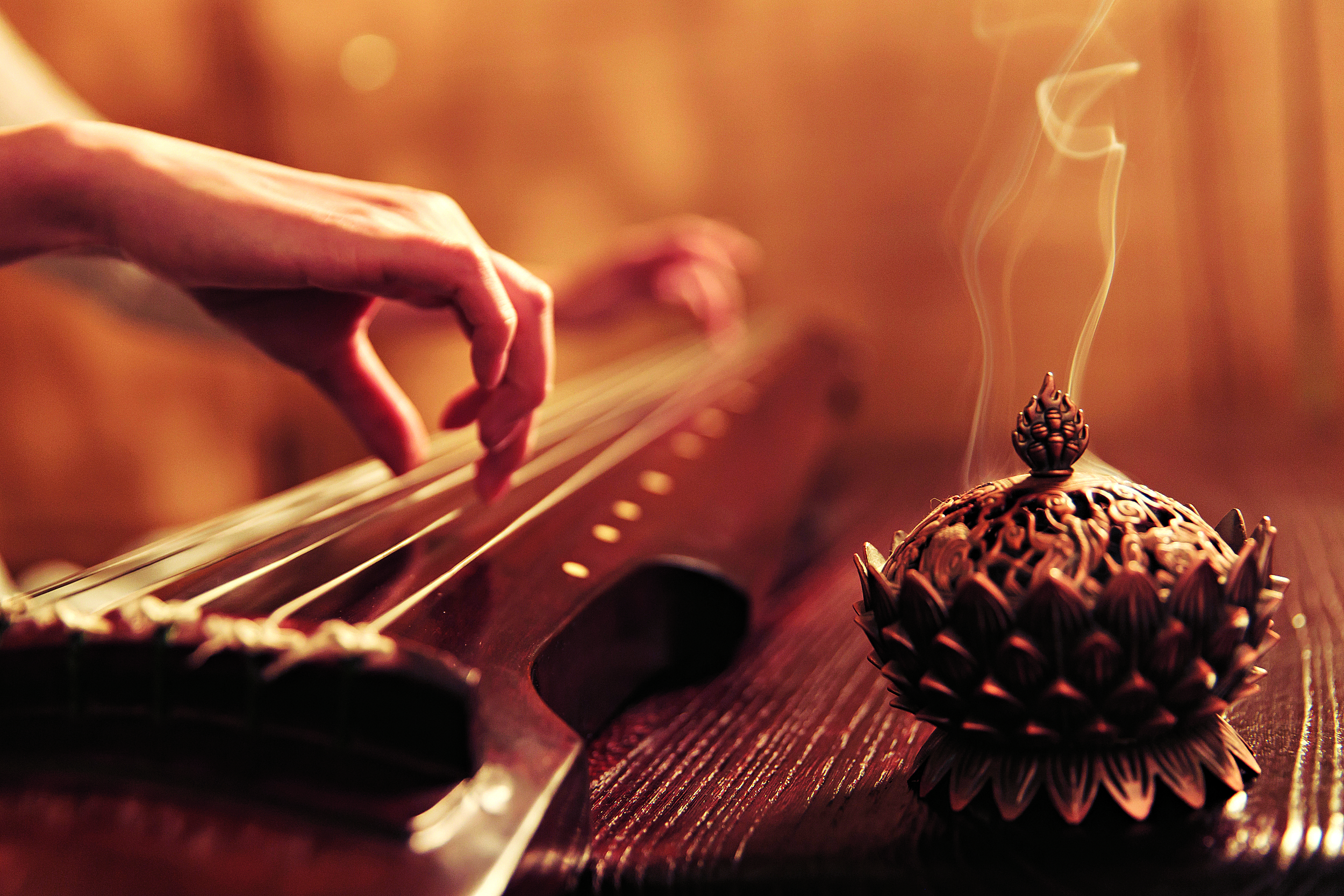
Photos Supplied by VCG
(Source: China Today/Women of China English Monthly May 2022 issue)
Please understand that womenofchina.cn,a non-profit, information-communication website, cannot reach every writer before using articles and images. For copyright issues, please contact us by emailing: website@womenofchina.cn. The articles published and opinions expressed on this website represent the opinions of writers and are not necessarily shared by womenofchina.cn.


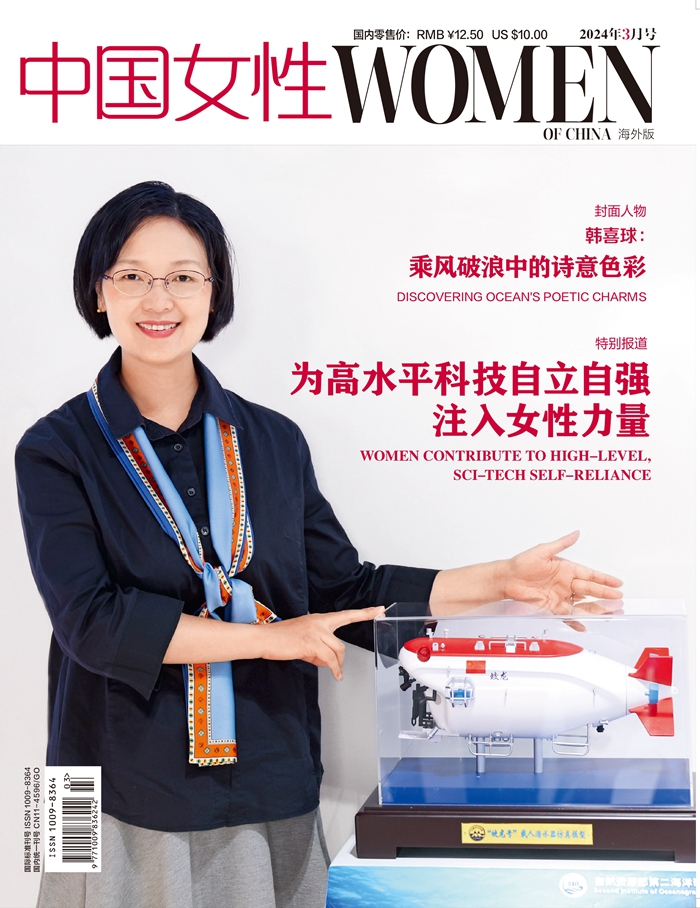





 WeChat
WeChat Weibo
Weibo 京公网安备 11010102004314号
京公网安备 11010102004314号